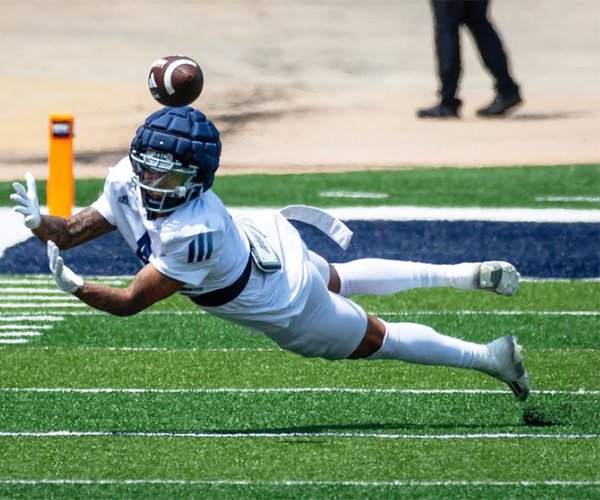Why did two schools, located in Texas and Missouri, join a football league called the Southeastern Conference?
Why are teams in San Diego, California and Boise, Idaho joining the Big East?
Why are there 10 teams in the Big 12 Conference and 12 teams in the Big Ten?
It all seems like the buildup to a bad joke, but it’s all true, and the reason is simple. College football is entertainment, entertainment belongs on television, and television generates money. And everybody is trying to grab the biggest fistful of money they can.
The problem for college football is that every conference, even the ones at the bottom of the Football Bowl Subdivision, are trying to follow the same model.
The concept is easy — get your conference into as many media markets as you can, because advertisers want eyeballs, and the more TVs your product is on, the more eyeballs that will see it.
Makes sense, right?
Well, for the SEC, yeah, it makes sense.
But for leagues like the Sun Belt and Conference USA, getting your product into the biggest markets — Atlanta, Austin, Miami and Charlotte, for example — has been the priority.
The problem is that the whole concept is smoke and mirrors.
It doesn’t make sense.
If NBC makes a TV show, and nobody likes it, what happens? It gets cancelled. NBC doesn’t keep putting it on television, hoping more and more people will start watching it.
The SEC has the biggest budgets, the most fans, the biggest stadiums, the best coaches and the best players. That’s why people are watching, and that’s why it doesn’t matter that Texas A&M and Missouri don’t quite play football at Alabama’s and LSU’s level.
Building that kind of product takes time. The SEC has been doing it since 1932. The Sun Belt has only been at it since 2001.
Simply put, the masses want to watch Alabama play Georgia. They don’t want to watch South Alabama play Georgia State. And it doesn’t matter how many TVs you put it on.
But Georgia State sent shockwaves through the Georgia Southern community when it announced it would be joining the Sun Belt in 2013. Many in the Eagle Nation were saying, "We have the championships, we have the wins, we have the fan base and we have the tradition. Why not us?"
Yeah, why not?
Because there are more eyeballs and television sets in Atlanta than there are in the coastal plain. And Georgia State’s 32,000 students, paying $263 per semester in athletic fees, will keep an FBS program floating whether fans spend money to watch it or not.
But you have to have a product to sell if you want mass appeal.
It’s not to say that Georgia State (which started playing football in 2010) and Charlotte (which hasn’t started playing football yet) won’t turn into good programs in the Sun Belt and Conference USA. They might, one day.
But nobody is going to watch a bad product, and if the lower tier of the FBS doesn’t start supplementing the "media-market schools" with some teams that can exchange blows with the "big boys," generate interest and get people excited about watching them, it won’t matter how many television sets they’re on. Advertisers will look elsewhere.
As for Georgia Southern, the administration’s desire is there. On Sept. 25-27, students will vote on whether or not to raise athletic fees by $25 per semester to add an upper deck to Paulson Stadium, and they’ll also vote on whether or not to add another $75 to the fees in the event of an invitation to an FBS conference.
If the students vote "yes," that would put Georgia Southern’s student fees close to Georgia State’s. It would still produce less money — Southern’s enrollment is roughly 10,000 less than State’s — but at the end of the day, Georgia Southern has taken the time to establish a fan base, tradition, a fistful of championships and a great product for a small-but-loyal fan base.
Georgia State hasn’t. They didn’t want to wait five hours for their turkey to cook at 325 degrees. They cranked up the oven to 1,625 degrees hoping it would be done in an hour. That’s a good way to start a fire.
Good football, tradition and a loyal fan base — that’s a recipe for generating excitement among the masses. Appalachian State didn’t all of a sudden decide to start playing football, then stroll to the Big House and beat Michigan in 2007. Those things take time, but those are the things the lower-tiered FBS conferences ought to be seeking.
Unfortunately, for storied programs like Georgia Southern and Appalachian State, they aren’t.
Not yet, anyway.
Matt Yogus may be reached at (912) 489-9408.
Matt Yogus may be reached at (912) 489-9408.





